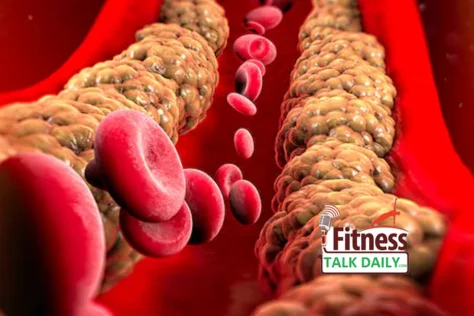Cholesterol is a type of fat that is essential for many bodily functions, but not all cholesterol is created equal. When people talk about cholesterol, they often mention good and bad cholesterol. But what does this really mean, and why is it important to understand the difference between good and bad cholesterol? In this article, we’ll break down the difference between good and bad cholesterol and explore how you can manage your cholesterol levels for better heart health.
Understanding cholesterol and keeping it in check is crucial for preventing heart disease, stroke, and other cardiovascular conditions. Let’s dive into the details of cholesterol types and how to maintain healthy cholesterol levels.
What Is Cholesterol?
Cholesterol is a fatty substance found in your blood, and your body needs it to build healthy cells. However, when you have too much cholesterol in your blood, it can build up in the walls of your arteries, leading to plaque formation. This can increase the risk of heart disease and stroke.
Cholesterol travels through the bloodstream in two main types of lipoproteins: low-density lipoprotein (LDL), commonly known as bad cholesterol, and high-density lipoprotein (HDL), known as good cholesterol.
The Difference Between Good and Bad Cholesterol
1. Good Cholesterol (HDL)
High-density lipoprotein (HDL) is often referred to as “good” cholesterol because it helps remove excess cholesterol from the bloodstream. HDL acts like a vacuum, collecting cholesterol from the arteries and transporting it to the liver, where it’s processed and removed from the body.
Benefits of Good Cholesterol (HDL):
- Helps reduce the risk of heart disease and stroke by removing excess cholesterol from the bloodstream.
- Protects against the buildup of plaque in the arteries, keeping your blood vessels clean and flexible.
2. Bad Cholesterol (LDL)
Low-density lipoprotein (LDL) is considered “bad” cholesterol because it can contribute to the buildup of plaque in your arteries. Over time, this plaque can harden and narrow your arteries, leading to a condition called atherosclerosis. This can restrict blood flow and increase the risk of heart attacks and strokes.
Problems Caused by Bad Cholesterol (LDL):
- Leads to plaque buildup in the arteries, causing narrowed blood vessels and increasing blood pressure.
- Raises the risk of heart disease, stroke, and other cardiovascular issues.
Key Differences Between Good and Bad Cholesterol
| Cholesterol Type | Description | Effect on Health |
|---|---|---|
| HDL (Good Cholesterol) | Carries cholesterol away from the arteries to the liver for removal | Reduces the risk of heart disease, stroke, and plaque buildup |
| LDL (Bad Cholesterol) | Carries cholesterol to the arteries where it can build up and cause blockages | Increases the risk of heart disease, stroke, and atherosclerosis |
How to Keep Cholesterol in Check
Now that we know the difference between good and bad cholesterol, it’s important to understand how to maintain a healthy balance. Here are some effective ways to keep your cholesterol levels in check:
1. Eat a Heart-Healthy Diet
The food you eat plays a significant role in regulating cholesterol levels. Incorporate the following into your diet to help improve your cholesterol:
- Healthy fats: Opt for monounsaturated and polyunsaturated fats found in olive oil, avocados, and nuts.
- Fiber: Foods high in soluble fiber, such as oats, beans, and lentils, can help lower LDL cholesterol levels.
- Avoid trans fats: These fats, found in processed foods, can increase bad cholesterol (LDL) levels and lower good cholesterol (HDL).
2. Exercise Regularly
Exercise helps raise good cholesterol (HDL) levels and lower bad cholesterol (LDL) levels. Aim for at least 30 minutes of moderate-intensity exercise most days of the week. Activities like walking, cycling, swimming, and jogging are great options.
3. Maintain a Healthy Weight
Being overweight or obese can lead to higher levels of bad cholesterol (LDL) and lower levels of good cholesterol (HDL). Losing excess weight, especially belly fat, can help improve your cholesterol profile.
4. Limit Alcohol Consumption
Drinking alcohol in moderation can raise HDL cholesterol levels, but excessive drinking can raise LDL cholesterol and increase blood pressure. Limit alcohol to no more than one drink per day for women and two drinks per day for men.
5. Quit Smoking
Smoking lowers good cholesterol (HDL) levels and damages the walls of your blood vessels. Quitting smoking can improve your cholesterol levels and overall heart health.
6. Consider Medication
For some people, lifestyle changes alone may not be enough to manage cholesterol levels. Statins and other medications prescribed by a healthcare professional can help lower bad cholesterol (LDL) and reduce the risk of heart disease.
Cholesterol Levels to Aim For
It’s essential to monitor your cholesterol levels regularly, especially if you have a family history of heart disease. Here are the recommended cholesterol levels:
| Cholesterol Type | Optimal Levels | Borderline High | High |
|---|---|---|---|
| Total Cholesterol | Less than 200 mg/dL | 200–239 mg/dL | 240 mg/dL or higher |
| LDL (Bad Cholesterol) | Less than 100 mg/dL | 100–159 mg/dL | 160 mg/dL or higher |
| HDL (Good Cholesterol) | 60 mg/dL or higher | 40–59 mg/dL | Less than 40 mg/dL |
Keep Your Cholesterol in Check for Better Health
Understanding the difference between good and bad cholesterol is key to maintaining a healthy heart. By focusing on a heart-healthy diet, regular exercise, maintaining a healthy weight, and avoiding smoking, you can keep your cholesterol levels in check. If necessary, seek medical advice for medications to help control cholesterol.
Keeping cholesterol in balance is one of the most important steps you can take to protect your cardiovascular health. By following the tips outlined in this article, you can reduce the risk of heart disease and stroke while promoting overall wellness.
GoodCholesterol




